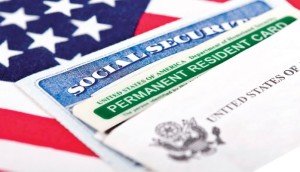State of the Union: President Obama’s Final SOTU
President Obama is delivering his final State of the Union address tonight. Immigration was an important topic in his last State of the Union address. At that time, the executive orders for the deferred action programs were announced but not yet in effect. They were also not blocked in the federal court. The executive orders contained substantive measures to improve various aspects of the immigration system: L-1 visas, hardship waivers, the visa bulletin process.
Here are quotes from previous States of the Union.
“And we should continue the work of fixing our broken immigration system — to secure our borders and enforce our laws, and ensure that everyone who plays by the rules can contribute to our economy and enrich our nation.” — 2010
“Now, I strongly believe that we should take on, once and for all, the issue of illegal immigration. And I am prepared to work with Republicans and Democrats to protect our borders, enforce our laws, and address the millions of undocumented workers who are now living in the shadows.” — 2011
“I believe as strongly as ever that we should take on illegal immigration. That’s why my administration has put more boots on the border than ever before. That’s why there are fewer illegal crossings than when I took office. The opponents of action are out of excuses. We should be working on comprehensive immigration reform right now. … Send me a law that gives them the chance to earn their citizenship. I will sign it right away.” — 2012
“Our economy is stronger when we harness the talents and ingenuity of striving, hopeful immigrants. And right now leaders from the business, labor, law enforcement, faith communities, they all agree that the time has come to pass comprehensive immigration reform. … we know what needs to be done. … Send me a comprehensive immigration reform bill in the next few months, and I will sign it right away. And America will be better for it.” — 2013
“Finally, if we are serious about economic growth, it is time to heed the call of business leaders, labor leaders, faith leaders and law enforcement — and fix our broken immigration system. … So let’s get immigration reform done this year.” — 2014
“Yes, passions still fly on immigration, but surely we can all see something of ourselves in the striving young student, and agree that no one benefits when a hardworking mom is snatched from her child, and that it’s possible to shape a law that upholds our tradition as a nation of laws and a nation of immigrants. I’ve talked to Republicans and Democrats about that. That’s something that we can share.” — 2015

